unmarked, with Celtic cross terminal and blade, inscribed IONA; together with a collection of brooches, to include, a penannular brooch, Robert Allison Edinburgh 1972, a galleon brooch, stamped SILVER and a bar brooch with an applied shield with ship detail; together with a teaspoon, Shipton & Co Ltd, plaited stem with a ship terminal (5) 35.5cm long Introduction: Alexander Ritchie (1856-1941) and Euphemia Catherine Ritchie (1862–1941) It would be fair for some to assume that the Celtic wares produced in Iona at the turn of the 20th century was to capitalise on the passing tourist trade. But the legacy left by Alexander Ritchie and his wife Euphemia Catherine Ritchie is far beyond that of any tourist souvenir. Both were at the heart of the Arts and Crafts movement, they were influenced by the Glasgow School of Art and each at the forefront of Celtic Revival. This melting pot of movements in addition to the landscape of Iona and the skill of these two individuals has created a legacy that is unique to this Scottish Island. Alexander Ritchie had his roots firmly in that of the Scottish islands, born in Tobermory on Mull, Ritchie was always surrounded by the sea. Originally training as a marine engineer, the first twenty years of his adult life took him across the world with the British India Steam Shipping Company. Even at this time, it is recounted that Ritchie was a keen woodworker and took inspiration from his marine environment which filter through his nautical motifs. It was not until his 40s in the mid-1890s he decided to take a break and enrol at the Glasgow School of Art. It was here that he met his future wife Euphemia Catherine Thomson. Both were immersed in the Glasgow Style, with contemporaries such as Jessie M. King, Charles Rennie Macintosh and Frances Newbery who went on to become the director. The Glasgow four of which Macintosh was a member fused together the Arts and Crafts movement of the late 19th century with Japonisme from their travels and most pivotal for Ritchie the Celtic Revival. The Celtic Revival helped re-invigorate an identity by looking to the early Medieval Celtic culture in art, music, poetry and literature. For Ireland the Book of Caels and the Tara brooch were key exponents for their identity. Similarly in Scotland items of National significance like the Hunterston brooch housed within National Museums Scotland collection helped inspire the past for people who had been subjected to the mass industrialisation of the Victorian era. For the Ritchie’s, the Celtic revival was more than a dissemination of history. Along with individuals such as Lady Victoria Campbell the daughter of the 8th Duke of Argyll, they sought to encourage Celtic Christianity. Ritchie was always a very keen follower of publications and articles from Scottish Anthropological and Folklore society with annotated examples found in his collection. The island of Iona is still a very spiritual place and Ritchie was made custodian of Iona Abbey. His passion for Iona and the Celtic Revival went hand in hand. Catherine and Alec as they were known moved to Iona shortly after they married in Glasgow. Their home in Iona at Shuna Cottage welcomed all those who visited the island. The Scottish Colourist artist Francis Campbell Boileau Cadell was a frequent visitor to their home, and also took inspiration from the island for his most seminal pieces, Ritchie would even sometimes sit for Cadell. Ritchie was immersed in all artistic aspects, their shop called Iona Celtic Art would offer jewellery and other metalwork, leather tooling and Catherine’s forte of embroidery which all drew on their skills, engraving, and enamelling learnt in Glasgow. The earliest examples are in wood, clearly what Ritchie felt most confidently in initially. Contemporary images of the shop show delights for the eyes in all corners; mirrors with zoomorphic corners, Celtic crosses hanging from all four walls, galleon ship pendants and penannular brooch covering door fr
unmarked, with Celtic cross terminal and blade, inscribed IONA; together with a collection of brooches, to include, a penannular brooch, Robert Allison Edinburgh 1972, a galleon brooch, stamped SILVER and a bar brooch with an applied shield with ship detail; together with a teaspoon, Shipton & Co Ltd, plaited stem with a ship terminal (5) 35.5cm long Introduction: Alexander Ritchie (1856-1941) and Euphemia Catherine Ritchie (1862–1941) It would be fair for some to assume that the Celtic wares produced in Iona at the turn of the 20th century was to capitalise on the passing tourist trade. But the legacy left by Alexander Ritchie and his wife Euphemia Catherine Ritchie is far beyond that of any tourist souvenir. Both were at the heart of the Arts and Crafts movement, they were influenced by the Glasgow School of Art and each at the forefront of Celtic Revival. This melting pot of movements in addition to the landscape of Iona and the skill of these two individuals has created a legacy that is unique to this Scottish Island. Alexander Ritchie had his roots firmly in that of the Scottish islands, born in Tobermory on Mull, Ritchie was always surrounded by the sea. Originally training as a marine engineer, the first twenty years of his adult life took him across the world with the British India Steam Shipping Company. Even at this time, it is recounted that Ritchie was a keen woodworker and took inspiration from his marine environment which filter through his nautical motifs. It was not until his 40s in the mid-1890s he decided to take a break and enrol at the Glasgow School of Art. It was here that he met his future wife Euphemia Catherine Thomson. Both were immersed in the Glasgow Style, with contemporaries such as Jessie M. King, Charles Rennie Macintosh and Frances Newbery who went on to become the director. The Glasgow four of which Macintosh was a member fused together the Arts and Crafts movement of the late 19th century with Japonisme from their travels and most pivotal for Ritchie the Celtic Revival. The Celtic Revival helped re-invigorate an identity by looking to the early Medieval Celtic culture in art, music, poetry and literature. For Ireland the Book of Caels and the Tara brooch were key exponents for their identity. Similarly in Scotland items of National significance like the Hunterston brooch housed within National Museums Scotland collection helped inspire the past for people who had been subjected to the mass industrialisation of the Victorian era. For the Ritchie’s, the Celtic revival was more than a dissemination of history. Along with individuals such as Lady Victoria Campbell the daughter of the 8th Duke of Argyll, they sought to encourage Celtic Christianity. Ritchie was always a very keen follower of publications and articles from Scottish Anthropological and Folklore society with annotated examples found in his collection. The island of Iona is still a very spiritual place and Ritchie was made custodian of Iona Abbey. His passion for Iona and the Celtic Revival went hand in hand. Catherine and Alec as they were known moved to Iona shortly after they married in Glasgow. Their home in Iona at Shuna Cottage welcomed all those who visited the island. The Scottish Colourist artist Francis Campbell Boileau Cadell was a frequent visitor to their home, and also took inspiration from the island for his most seminal pieces, Ritchie would even sometimes sit for Cadell. Ritchie was immersed in all artistic aspects, their shop called Iona Celtic Art would offer jewellery and other metalwork, leather tooling and Catherine’s forte of embroidery which all drew on their skills, engraving, and enamelling learnt in Glasgow. The earliest examples are in wood, clearly what Ritchie felt most confidently in initially. Contemporary images of the shop show delights for the eyes in all corners; mirrors with zoomorphic corners, Celtic crosses hanging from all four walls, galleon ship pendants and penannular brooch covering door fr




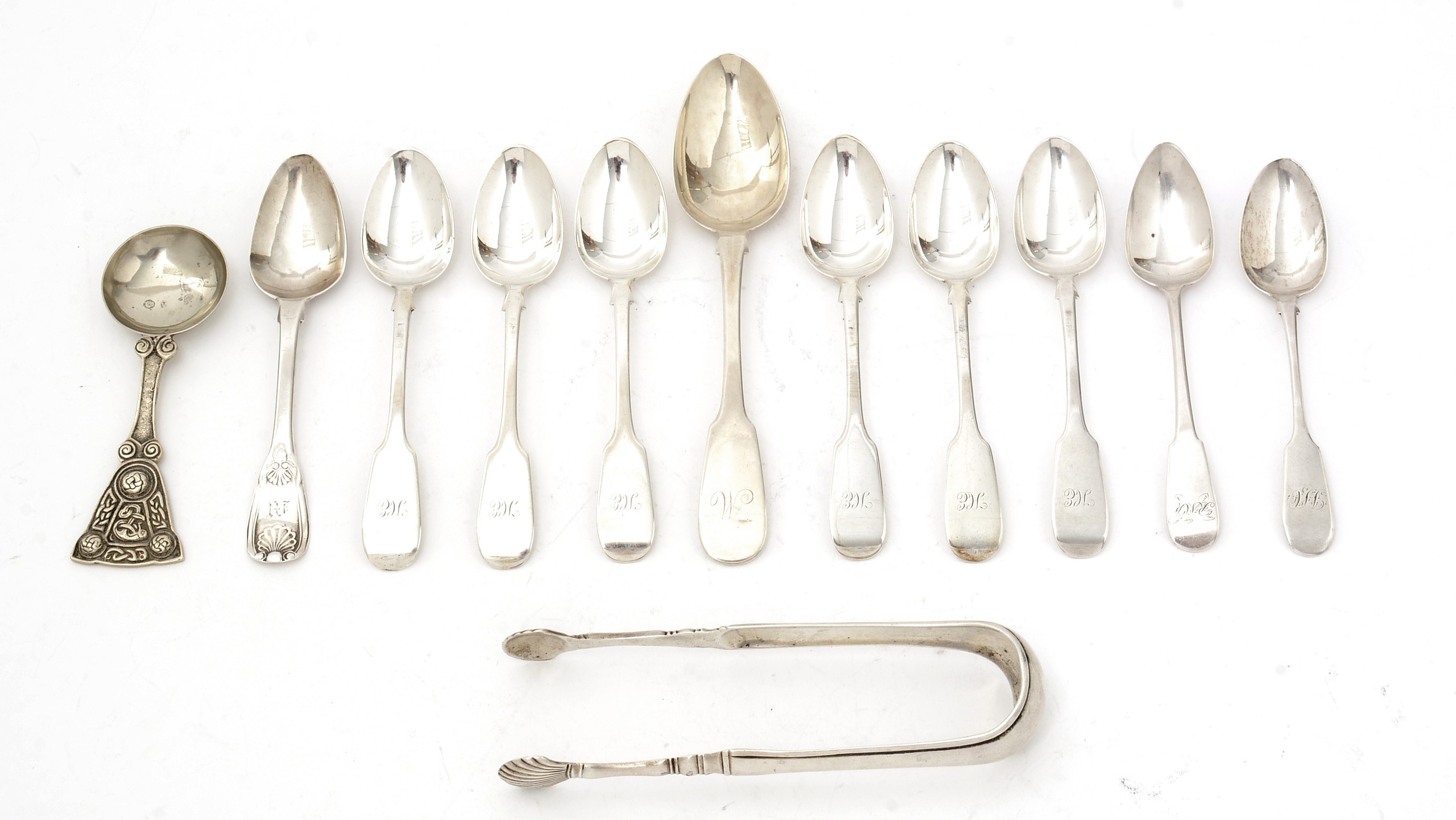





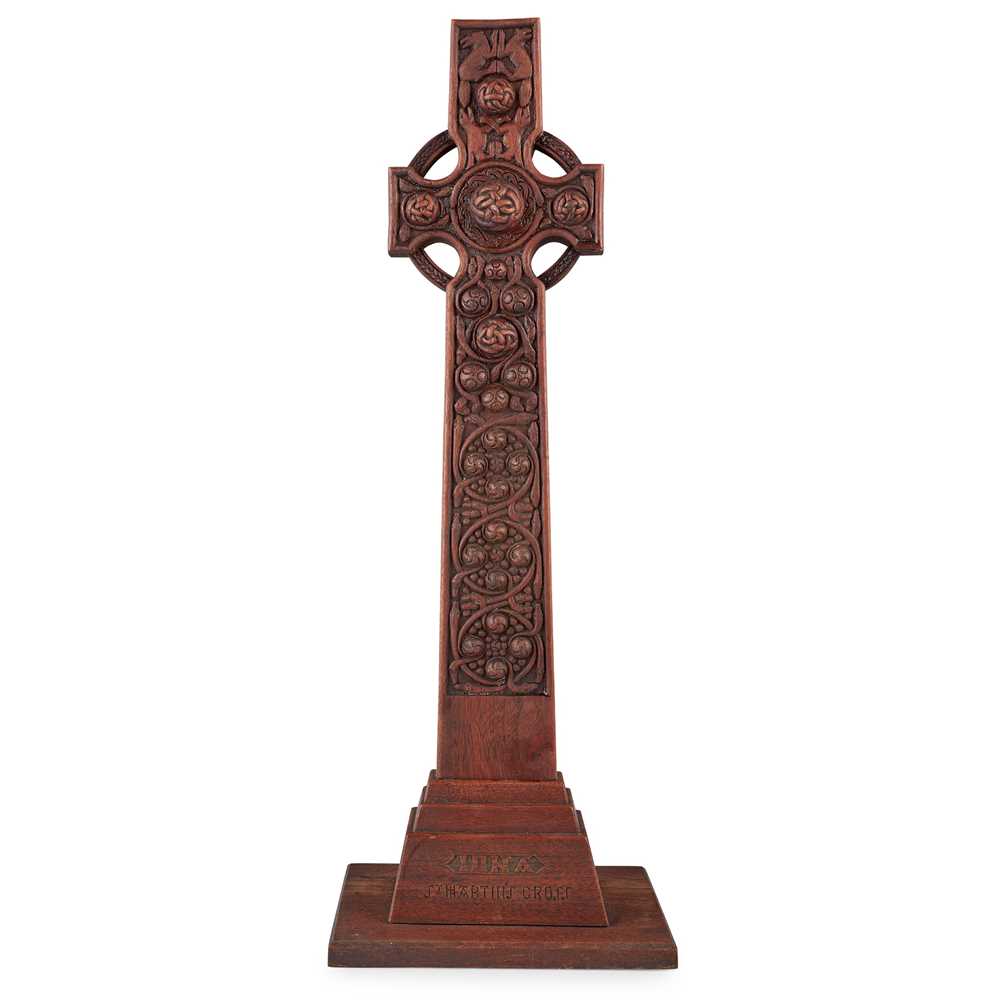
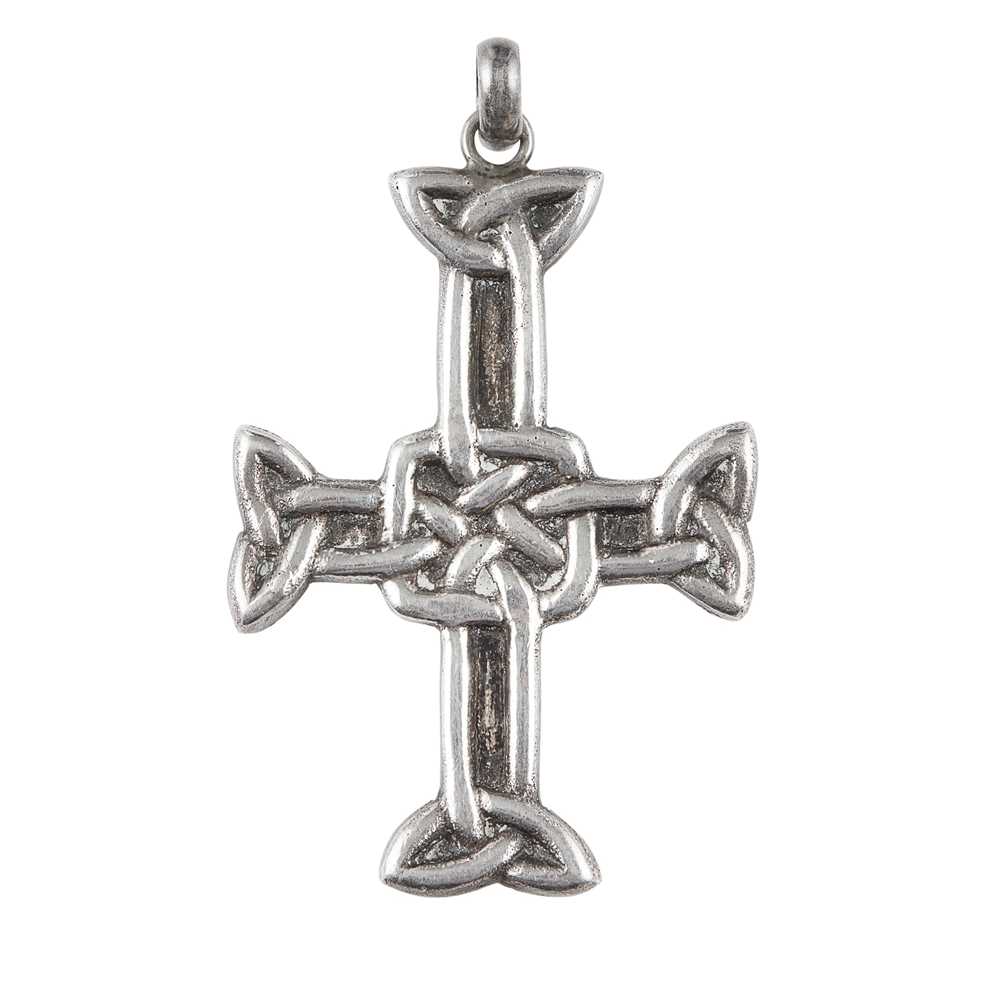

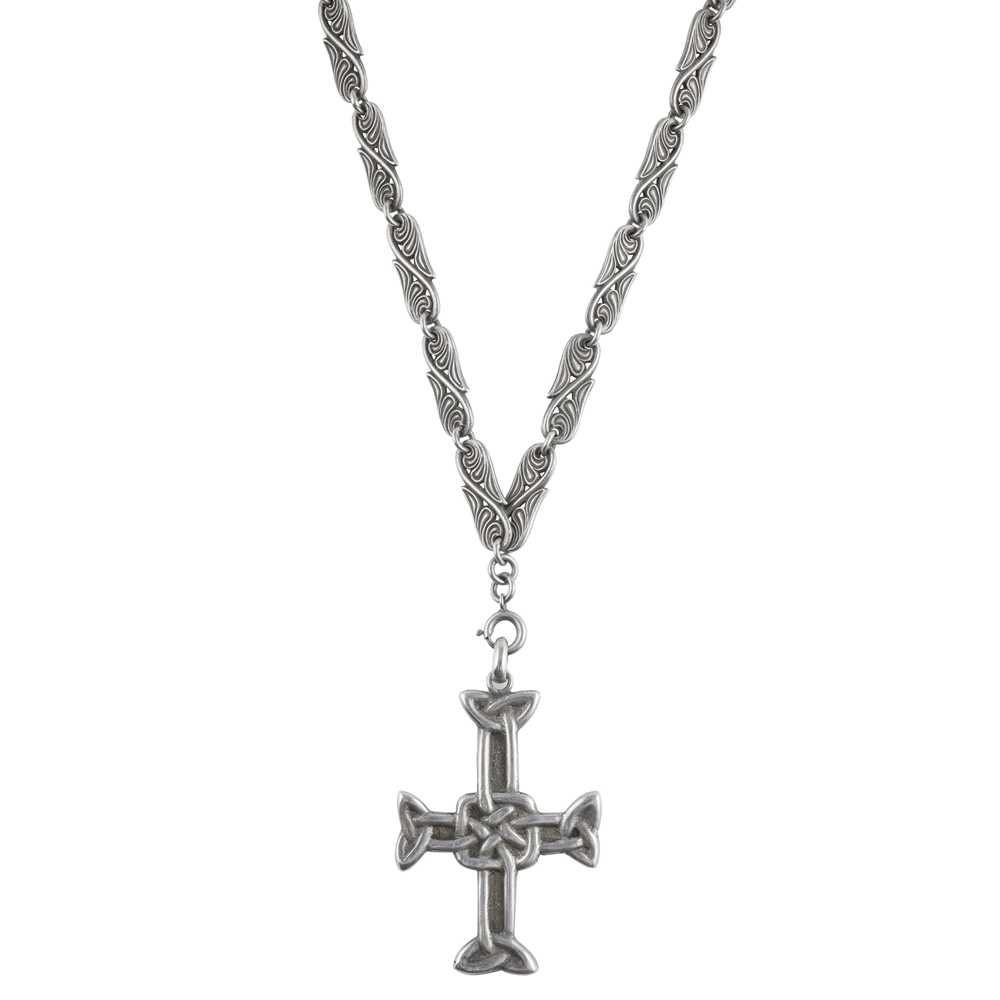
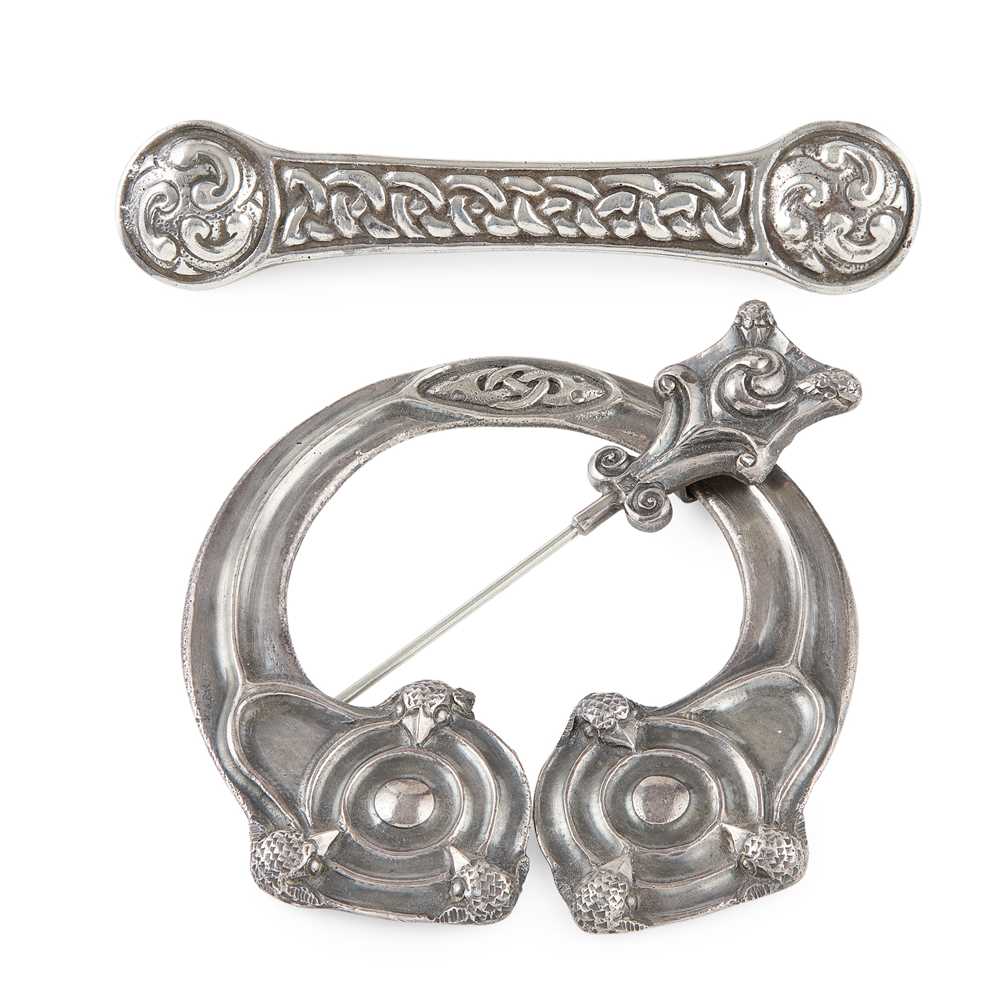
Try LotSearch and its premium features for 7 days - without any costs!
Be notified automatically about new items in upcoming auctions.
Create an alert